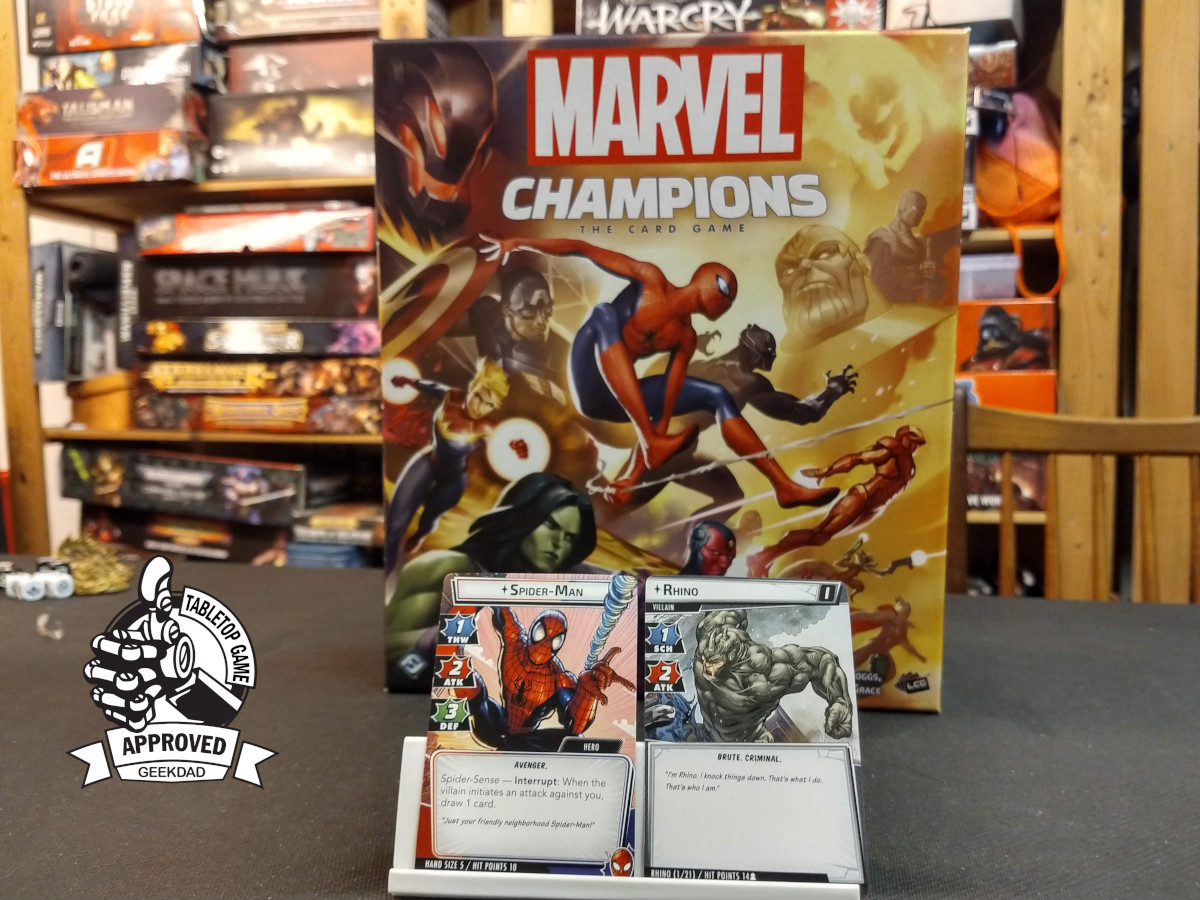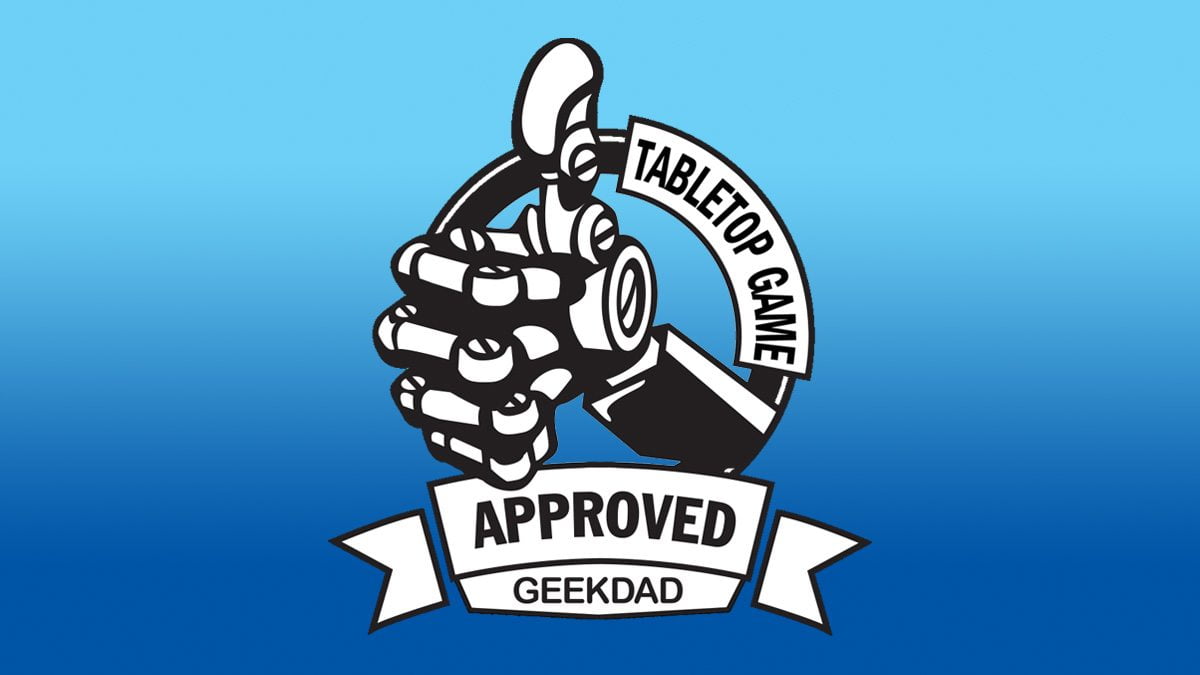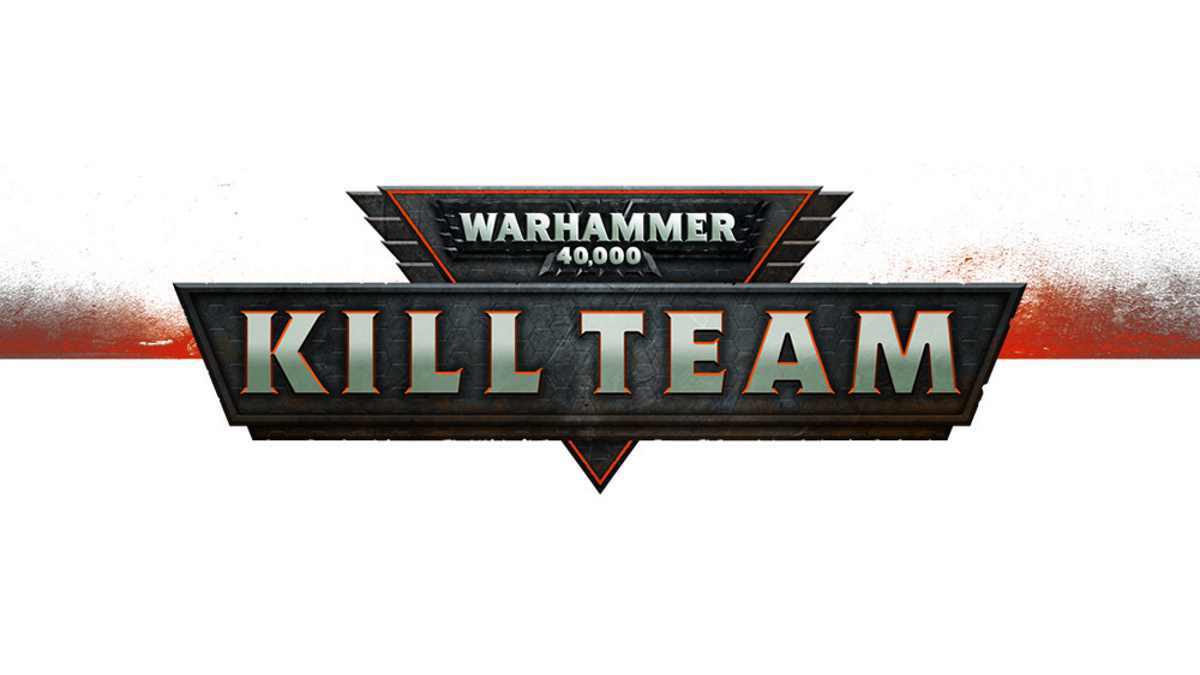Marvel Champions is a cooperative card game that allows players to take on the mantle of a Marvel superhero, aiming to bring down the dastardly schemes of a maniacal villain. It’s addictive, brilliantly thematic, and in the core box alone, there are hours of gameplay.
In my “Parent’s Guide” series, I aim to introduce specialist games to parents who perhaps have not been exposed to them before. Many GeekDad readers have been playing games for decades and will be familiar with games like this. Marvel Comics and their characters, however, have a universal appeal, giving games like Marvel Champions a potential audience far beyond that of the traditional specialist games market. This review is primarily aimed at that audience.
I’ve played a lot of Marvel Champions during 2020 and I’ve thoroughly enjoyed every game. Each encounter has been nail-bitingly close and deeply evocative of its source material. Like many of the best games, Champions is very simple to pick up, but has a huge amount of depth. I have no hesitation in considering it GeekDad Approved.
Key facts about Marvel Champions.
You get to play as the heroes.
In the Champions box, you’ll find all the cards you need to play with the following Marvel heroes: Spider-Man, Captain Marvel, Black Panther, She-Hulk, and Iron Man. You play with a deck of cards that contains cards that belong to that hero. These will represent special abilities unique to the hero you’re playing, like web gauntlets, Iron-Man’s suit, or bars of Vibranium.
Marvel Champions is a team effort!
Marvel Champions is a cooperative game, which means that you’re all working together to defeat the villain. No single player controls the enemies. Your adversary is the game itself. Each turn, the cards tell you what the villain will do and you all play that out together. Each player then takes a turn with their hero. You discuss how best to use your collective resources to thwart the villain’s schemes. This involves doing all those super-heroic things like backflips, suiting up, and occasionally, Hulk-Smashing!
I have 3 children a total of 7 years apart, finding games we all want to play can be tricky. The oldest child is likely to be able to win most games easily. Here, as everybody is on the same side, older children can use their expertise to help out their younger siblings. Some management might be needed to ensure they don’t take over completely, but co-op games generally mean fewer tantrums and tears.
It’s for 1-4 Players.
Never underestimate the power of a solo game. It’s great to play games with our kids, but sometimes we don’t have time. With this game, they can play with you and on their own. Completely on their own, even if there are no siblings around.
It’s very thematic.
Considering the entire game is made of cardboard, the designers have beautifully captured the comic book themes of the source material. The villains are dastardly; they have evil plots. The good guys are heroic a lot of the time, but they also have to slip back to their alter-egos and be Peter Parker, Carol Danvers, or T’Challa for a while too.

The rules are well laid out.
If you’re not used to games like Marvel Champions some of the concepts involved will probably be unlike anything you’ve encountered in games before. Fear not. The rules are very well laid out. The box contains two booklets. The “Learn to Play” book takes you through setting up and playing your first game. It’s methodical and clear. It will be a handy reference for your first few playthroughs.
The Rules Reference Guide contains clarification and further information about aspects of the rules that you might encounter as you continue to play the game. Don’t feel you have to read the rules reference guide through from start to finish. Think of it more as a dictionary.
Many of the game’s rules are written on the cards, in the form of keywords. For example, where you see the word “Hero” it always means the same thing. The rules reference guide gives you the definition of Hero in the context of the game. When you’re not sure how to implement a rule with a card on the table, the rules reference guide usually has the answer.
It’s playable straight out of the box.
Admittedly, not a huge boast; after all most games are. Marvel Champions is a deckbuilding game, but you don’t need to worry about building your own decks for your first games, or indeed, ever, if you don’t want to. The cards are arranged into decks that you can pick up and play.
It’s a deckbuilding game.
Each hero in a game of Marvel Champions is represented by a deck of cards. As mentioned above, during your first games, you’ll use the decks given to you in the box. There are ready-made decks for both Spider-Man and Captain Marvel, but as I mentioned at the beginning of the review, you can also play 3 other heroes.
The cards for She-Hulk, Iron Man, and Black Panther are included in the box, and the first, easiest type of deckbuilding you might do is a straight-swap of the hero cards in one deck for the hero cards from the box. Each hero has 15 cards that belong to them and can only be used when playing that hero. The easiest way to make a new deck is to do a straight swap. Now your Spider-Man deck has become a She-Hulk deck. Woo!
But the fun doesn’t have to stop there. As well as hero cards the game has “aspect” cards and “basic” cards. These too can be chopped and changed to create new decks. The Learn to Play guide takes you through the steps of basic deckbuilding and explains what you can and can’t do.
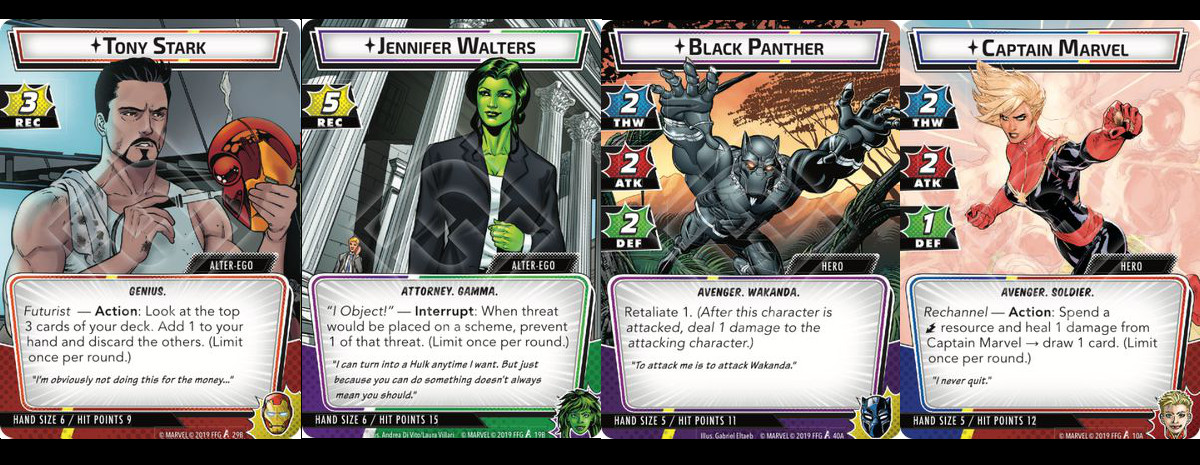
Marvel Champions is a “Living Card Game.”
If you’re more used to more traditional games like Monopoly or Uno the idea of a “Living Card Game” might be a new concept. Most traditional games are one-shot purchases. You buy them and that’s it; the rules and components stay the same forever.
Living Card Games grow as time goes on. They’re akin to collectible card games, such as Pokemon, where new cards are produced on a regular basis and you can buy and add those cards to your collection and incorporate them into your games. There is a very important difference, however.
Pokemon cards are annoying because they come in blind boosters. You don’t know what you’re going to get inside the packet when you buy one. Even more annoying, they have an artificial scarcity which drives up the value of cards on the second-hand market. If your child wants a particular card or set of cards, tracking them all down can be irritating and costly.
Marvel Champions regularly has new packs brought out, but (unlike Pokemon) each sealed pack has exactly the same cards in it as every other pack of the same name. Your Captain America pack will contain the same cards as all the other Captain America packs in the world. You can even see what those cards are before you buy, either on the internet or via a QR code on the back of the packs. This means no hunting down single cards. If you buy Captain America, you get everything you need to play Captain America.
With Living Cards Games you don’t have to chase cards in quite the same way as you might similar card games. Don’t fancy playing Hulk? Then don’t buy Hulk. You will miss out on a few cards that could be used with any hero, but as this isn’t a competitive game, that doesn’t really matter. You can make do and have great games with what you have. (One of the sales tricks of competitive card games, that use a similar fixed pack mechanism for delivering cards, is to spread the best cards around into every available set in the game. Because it’s competitive, if you want to win, you’re at an advantage if you have access to ALL the sets. Here, it doesn’t matter.)
How do Marvel Champions boosters work?
In Marvel Champions there are currently two types of booster expansion (and also a campaign box, Rise of the Red Skull.) These packs either contain one new Hero, such as Thor, Captain America, Black Window, and Ms. Marvel, or they include new villains, such as the Green Goblin or Kang. The villain decks add new challenges and foes for you to fight. The hero decks include one pre-generated deck, that you can play immediately, but also a few additional cards you can add to the decks you’ve built. In fact, as per the deckbuilding rules, apart from the hero specific cards that come in new packs, any of the new cards can be incorporated with all your existing cards. Cool, eh?
Essentially, with each new pack you buy, the scope of your game increases. More cards give you more options. Part of the fun of the game is unlocking powerful card combinations to devastate the game’s villains.
Deckbuilding may seem like a complete faff to you. You’re busy, you don’t have time to spend trawling through cards making powerful combos and that’s fine. You don’t have to, just use the lists that come straight of the box. But, your time-rich, never remember to do the chores, children, probably do have the time, and if they love Champions, they’ll love making decks. Better still, because the game is cooperative, they can create decks for you to play alongside them, and you can watch on awe as their creations sweep the villains from the board. They can, in turn, derive a deep sense of achievement of having created something that you have then used together to crush all before you.

Something to be aware of.
Marvel Champions has a loyal and enthusiastic fanbase, which is great for the health of the game. It means there are lots of places to find help, advice, and ideas that make for interesting games. I’ve included a couple of links at the end of the review.
It does also mean that parents have to be on the ball when new products hit the shelves. Particularly, during the current pandemic. The fans of this game generally pre-order the new cards immediately after they are announced. The supply of new packs struggles with meeting the demand, particularly on release. As things stand, unless you pre-order, you will probably struggle to find new stuff in your local shop when it is first released. Also, be aware that these supply issues are causing some release dates to slip at the moment
This isn’t a problem necessarily. Supply usually catches up after a few weeks but it’s something to be aware of if you were thinking of picking up a new pack as a present. It’s an exercise in expectation management rather than any serious impediment to the game. It’s just something to be aware of you, so you can make your children aware they will get their new “XXX” pack, but they may have to be a little patient.
A brief overview of Marvel Champions’ gameplay.
I’m not going to go into a huge amount of depth on how to play the game but do check out the video above if you want to see a full game in action.
The aim of Marvel Champions, as already stated, is for the players (the heroes) to defeat the villains.
All of this is done through cards. Each player has one hero deck of cards and there is a single central villain deck. The game tells you how to create various villain decks of increasing difficulty. When you first open the box, the basic deck for Rhino, the first villain, has been pre-built for you.
Heroes have two forms – Their Hero form and their Alter-Ego form. This is represented by a double-sided card, which you flip between as the game goes on. In hero form, the heroes can damage the villain and thwart evil schemes, but they cannot heal themselves. When in alter-ego form heroes cannot be injured, and they can heal, but the villain is free to wage war on the city, bringing their schemes to fruition.
Both heroes and villains have hit points (the villains usually have more). If the villain is defeated (reduced to zero hit points) the players win the game. If all the heroes are defeated, then it’s game over.
All villains scheme. In the initial starter game, the villain is Rhino and he has a simple scheme; break into a secure facility and steal some Vibranium. If he does that he wins and the players lose. Mechanically this is represented by a numerical value. Each time Rhino adds a point of threat, he gets closer to completing his scheme. In later games, stronger villains have more complicated schemes with extra stages, but the same rule applies if the villain fulfills all of the main scheme, they win.
The game takes place in two phases the hero phase and the villain phase. The rules work the same whether you have 1 hero or multiple heroes, you just have to allow each player to take a turn to use their hero.
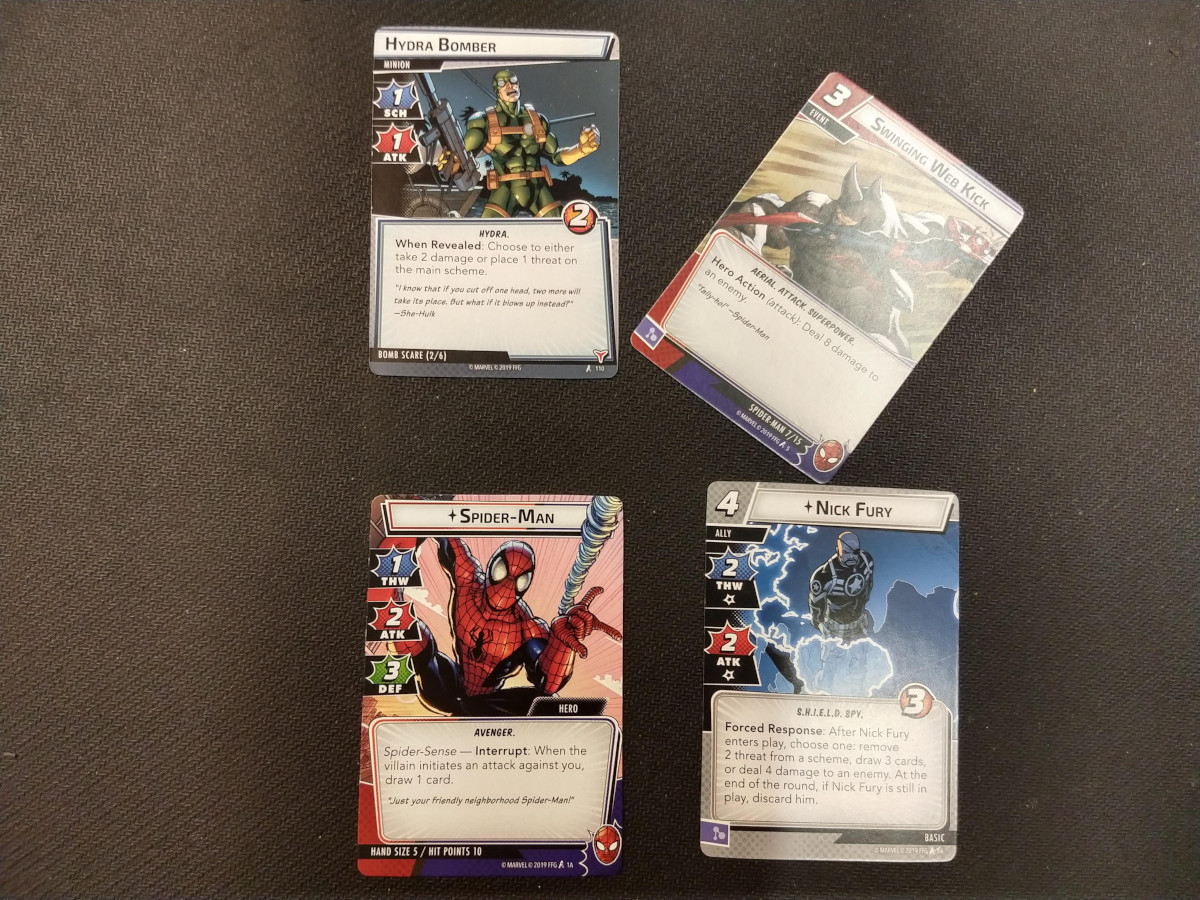
The Hero Phase:
The heroes each start with a hand of cards (usually 6 dependent on which hero they are playing). In the hero phase, if they are in hero form, they may attack the villain or they may attempt to thwart their scheming. Every hero has an Attack stat and a Thwart stat, and they can pick which one they want to do. Usually, heroes will only be able to either attack or thwart on a single turn, not both. Thwart removes threat from a scheme (more on that in a bit) and Attacking does damage to a villain.
If you’re in alter-ego form, you can heal your hero, helping them get ready for the next fight. Both forms usually have a special ability that they can only do when the relevant side is facing upwards.
Players also have a hand of cards. They can play these cards to do extra damage or remove threat from the villain’s scheme. Some cards summon allies to help you defeat the villain, or they might give power-ups to your hero. The effects of the cards are wide and varied. Some upgrade your hero permanently like Iron Man’s suit, some are one-offs, like a swinging web kick to the face, and others can be used a few times before being discarded. Some cards are only effective in hero form, and others, alter-ego form, so make sure you’re in the right form when you want to do something (you can’t do a swinging web kick when you’re Peter Parker!). Players can (usually) only change form once per turn.

It’s not as simple as just playing the cards though. Each card has a resource cost, given in the top left of the card. These usually range from 1-5. All cards can also be used as resources, given by the symbol towards the bottom left. Most cards are worth 1 resource, with a few being worth 2. In order to play a card, you must also pay the resource for that card by discarding some of your other cards. If you want to play a card of resource cost two, you have to discard two other cards, which means you use 3 cards in total. If you want to play a card that’s resource cost 5, you have to discard 5 cards, which means you’ll almost certainly have no cards left to do anything else. Cards that cost 1 (or even 0) are generally less powerful but they allow you to play more cards, which might be more beneficial. Already you can see the game is full of tactical choices.
When you’ve played all the cards you want to play and used any abilities you want to use, it’s the next hero’s turn. Each player takes a turn until they have all been. Note: It is possible for heroes to help one another by playing cards during another player’s turn. Once everybody has played, players redraw their cards back up to their hand size. Players in hero form generally draw up to 5 cards, those in alter-ego form, 6.
The Villain Phase:
Once all the heroes have played. It’s the villain’s turn. The game is cleverly designed to scale for multiple heroes. It’s not really any easier with 4 players than it is with one.
The first thing the villain does is advance their scheme by 1. Every turn the villain gets a little bit closer to fulfilling their dastardly plans.
The villain does not have a hand of cards. They have a villain card that sits face up and a face-down encounter deck. The encounter deck provides two functions within the game.
The first thing a villain does is scheme or attack. For each player in hero form, he will attack them, and probably do damage to them. Players can choose to defend against these attacks with their hero, but this may mean they can’t use them as effectively in their next turn (one of the game’s key choices is when to take the damage and when to defend). For each player in alter-ego form, the villain will scheme. If you have allies in play (from cards you played in the hero phase) these can defend attacks too but it will most likely take them out of action.
As you can see, you need to balance hero survival with stopping the villain from completing their plans.
If the villain has any minions in play these will attack or scheme too. They do the same as the villain.
Next, the villain deals one encounter card to each hero. These are resolved in turn. They may cause the villain to attack again, bring a minion into play, or they might give the villain some new armor or a weapon. Once all the encounter cards have been played out, the villain’s turn is over, and it’s the players’ turn again. A lot of the detail is in the cards, so you don’t have to remember lots of rules. The cards tell you what to do when you draw them.
These steps are repeated until (hopefully) the villain is defeated or they complete their scheme/kill all the heroes.
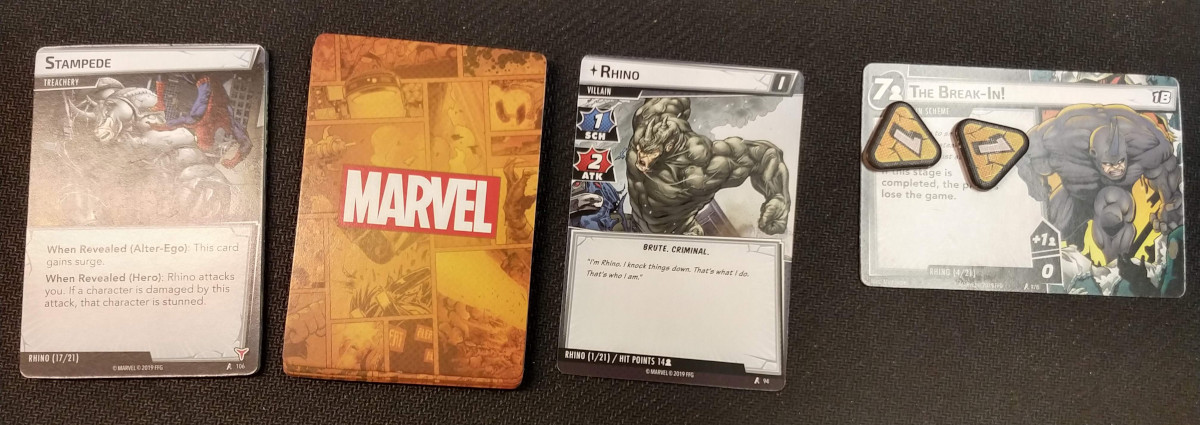
Summing Up or Why Marvel Champions Is GeekDad Approved.
I have had such a blast playing Marvel Champions and I’ve barely scratched the surface of what the game can be. Every game I’ve played feels as though it’s come down to the wire. Another turn from the villain and I would have been taken down. A different card drawn before I was knocked out, perhaps I might have survived. The more you play, the better you become at making the correct decisions needed to maximize your success.
I haven’t played a huge amount of multiplayer games, thanks mostly to COVID-19, but Marvel: Champions is a lightly tactical game that allows you to chat with friends or have a laugh with your family whilst scratching that gaming itch. Being a collaborative effort, families of disparate ages can join in. The way the game is designed rewards those with the time and inclination to explore the possibilities that the cards have to offer, without penalizing those who just want to turn up, open the box, and play.
There are some great card expansions for the game, that add to the overall sense of the Marvel theme, and with the Holiday season just around there corner and a Guardians of the Galaxy themed set arriving early next year, this is a great time for you and your family to discover Marvel: Champions.
If you want to check out more about the game, do take a look at the official Fantasy Flight Games pages devoted to it, or one of the many excellent community-run blogs, such as Hall of Heroes. The game also has a helpful and active Facebook community.
Click here to see all our tabletop game reviews.
![]() To subscribe to GeekDad’s tabletop gaming coverage, please copy this link and add it to your RSS reader.
To subscribe to GeekDad’s tabletop gaming coverage, please copy this link and add it to your RSS reader.
Disclosure: GeekDad received a copy of this game for review purposes.
